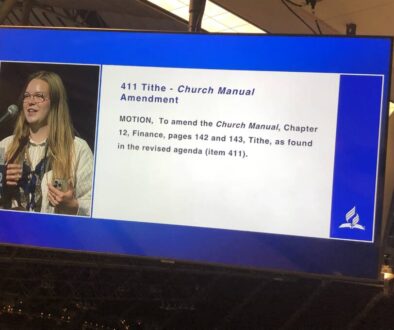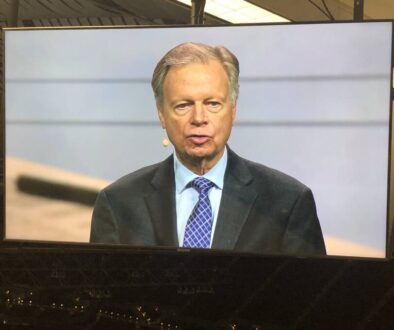Annual Meeting Agenda: Denomination’s Proposed Strategic Plan for Next Five Years
October 9, 2015: Perhaps the single most important item on the agenda for the annual meeting of the denomination’s General Conference executive committee next week is a 30-page document outlining goals for 2015 to 2020. It emphasizes a mission-driven, Christ-centered approach for the global movement that will probably have 30 million adherents by the end of the five years.
A total of 21 objectives are listed on pages 14 and 16, including increasing the engagement of young adults, involving believers in service as the path to faithful Christian discipleship, “affirm the administrative role of pastors,” and “improve leadership practices in order to enhance the credibility of, and trust in, the church organization.” (Numbers 8 through 11.) The first seven objectives focus on expanding “spiritual practices” among church members and steps to “enhance unity and community.”
Objectives that impact the world outside the denomination include continued expansion of Adventist presence in the world’s cities and the “10/40 window,” a region in Asia and the Middle East where there are very few Christians, specifically “planting new groups of believers” as well as other projects. In other words, grow the Adventist engagement with the secular world and societies dominated by faiths other than Christianity. (Objectives number 12-14 and 19.)
Clearly, the leadership of the denomination is being asked by this document to embrace non-traditional approaches to outreach: Objective 15 is, “To substantially reorient our which this proposed plan is based know that for Adventists to continue to use the same approaches will result in a slowing and eventual stall of church growth in at least some parts of the world, although others may still have great success with traditional methods and delay the decline longer.
Pages 6 through 11 give a concise summary of the research done in 2011 through 2013 to prepare a factual base for this plan. “Five major research projects took place globally.” Samples totally “almost 41,000 church members and nearly 1,000 former members were interviewed or … completed questionnaires” in this research. It “included 4,260 pastors” and 1,200 young adults.” Two gatherings of scholars and administrators discussed the findings; “Refocusing Adventist Urban Mission for the 21st Century” and “Summit on Nurture and Retention,” both in 2013.
The grace of Jesus Christ will have renewed focus for Adventists under this proposed plan, despite criticism from within and outside the movement that it can be too legalistic and have a “workaholic” organizational culture. “The mission that called our community into being began with the redemptive act of God,” the committee members will be asked to agree (page 12) in a section on “The Reach of Grace” which is intended to infuse all the other plans.
The “guts” of the plan are found in 81 “key performance indicators,” or specific, measurable items that will be used to evaluate progress toward the goals, which are listed on pages 16 through 23. Researchers will check on these items throughout the five years of the plan and regularly report to denominational leaders.
The entire document can be downloaded in PDF here. A comprehensive report on the research mentioned above, which was published in 2013, can be downloaded here.
Adventist Today will report on the discussion of this proposed plan as well as any amendments made from the floor of the annual meeting. When the plan is adopted, that will also be reported.



